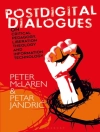The construction of the Merowe Dam along the Nile in northern Sudan flooded local villages and forced thousands of inhabitants to flee to higher ground. Despite the radical social and environmental transformations and an uncertain future, the Manasir have tried to continue their peasant way of life and resisted relocating to state-run resettlement schemes. Rather than focusing on migration and resettlement, the author follows the people’s attempts to preserve their homeland and have meaningful lives along the emerging reservoir. The book grapples with the fundamental question of how to re-establish life in a world that is falling apart.
Jadual kandungan
List of Illustrations
Acknowledgments
Note on the Text
Abbreviations
Chronology
General Maps
Introduction
Chapter 1. Interwoven Spaces and Perspectives
Chapter 2. Staying in the Homeland: From a Vision to Political Mobilization
Chapter 3. Looming Destruction and Displacement
Chapter 4. Makeshift Arrangements
Chapter 5. Makeshift Lives
Chapter 6. The Re-Formation of Life: Possibilities and Processes
Conclusion
Postscript
Glossary
References
Index
Mengenai Pengarang
Valerie Hänsch is a Postdoctoral Researcher at the Anthropological Museum in Berlin, Germany. As a visual anthropologist, she has produced several collaborative ethnographic films. Her film “Sifinja – The Iron Bride” (2009) has been awarded several prizes. She is co-editor of the special journal issue Temporalities of Waiting in Africa (Critical African Studies, 2020).












